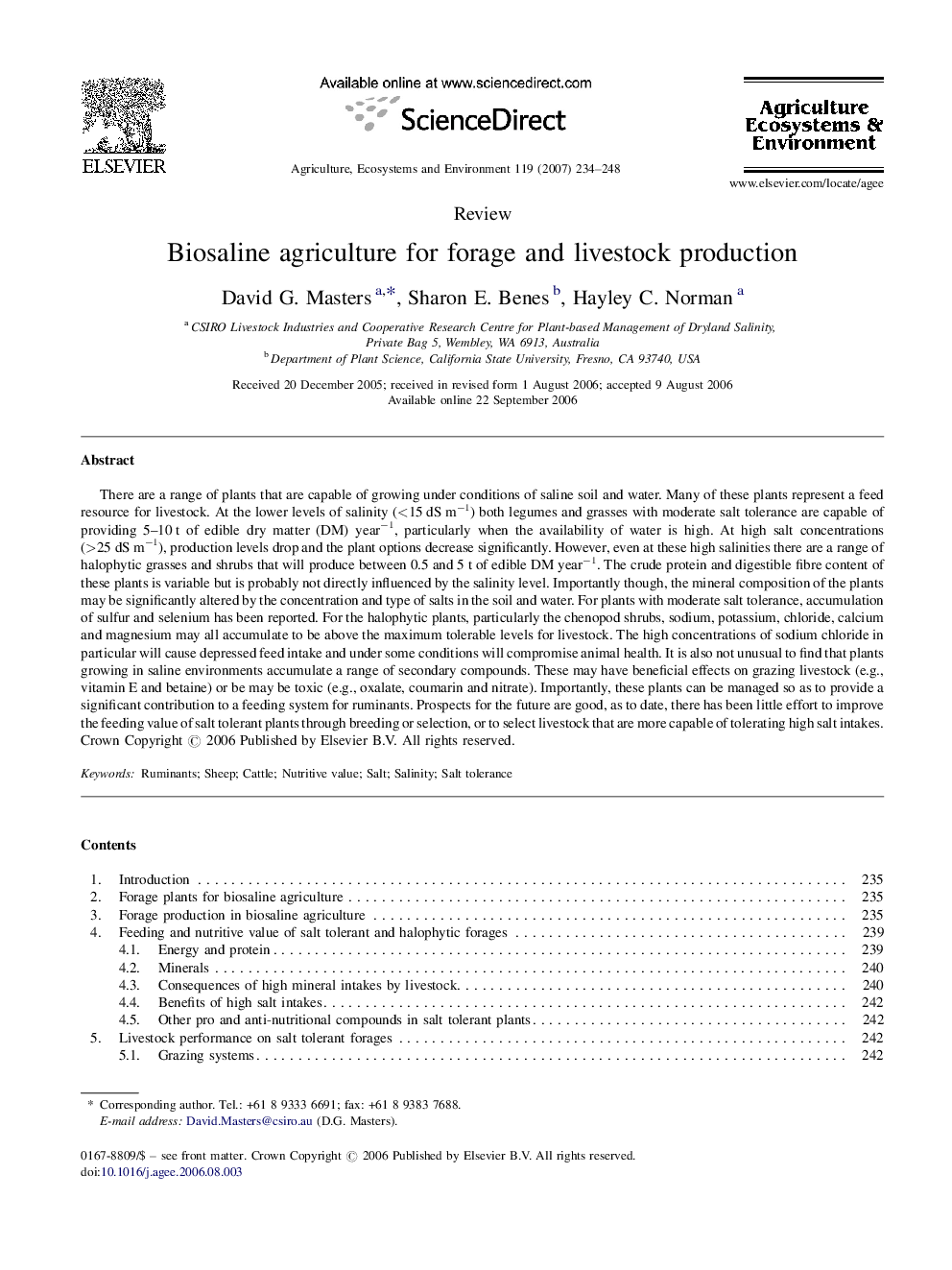| کد مقاله | کد نشریه | سال انتشار | مقاله انگلیسی | نسخه تمام متن |
|---|---|---|---|---|
| 2415847 | 1552142 | 2007 | 15 صفحه PDF | دانلود رایگان |

There are a range of plants that are capable of growing under conditions of saline soil and water. Many of these plants represent a feed resource for livestock. At the lower levels of salinity (<15 dS m−1) both legumes and grasses with moderate salt tolerance are capable of providing 5–10 t of edible dry matter (DM) year−1, particularly when the availability of water is high. At high salt concentrations (>25 dS m−1), production levels drop and the plant options decrease significantly. However, even at these high salinities there are a range of halophytic grasses and shrubs that will produce between 0.5 and 5 t of edible DM year−1. The crude protein and digestible fibre content of these plants is variable but is probably not directly influenced by the salinity level. Importantly though, the mineral composition of the plants may be significantly altered by the concentration and type of salts in the soil and water. For plants with moderate salt tolerance, accumulation of sulfur and selenium has been reported. For the halophytic plants, particularly the chenopod shrubs, sodium, potassium, chloride, calcium and magnesium may all accumulate to be above the maximum tolerable levels for livestock. The high concentrations of sodium chloride in particular will cause depressed feed intake and under some conditions will compromise animal health. It is also not unusual to find that plants growing in saline environments accumulate a range of secondary compounds. These may have beneficial effects on grazing livestock (e.g., vitamin E and betaine) or be may be toxic (e.g., oxalate, coumarin and nitrate). Importantly, these plants can be managed so as to provide a significant contribution to a feeding system for ruminants. Prospects for the future are good, as to date, there has been little effort to improve the feeding value of salt tolerant plants through breeding or selection, or to select livestock that are more capable of tolerating high salt intakes.
Journal: Agriculture, Ecosystems & Environment - Volume 119, Issues 3–4, March 2007, Pages 234–248